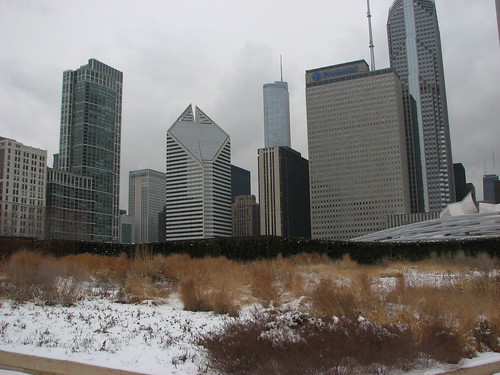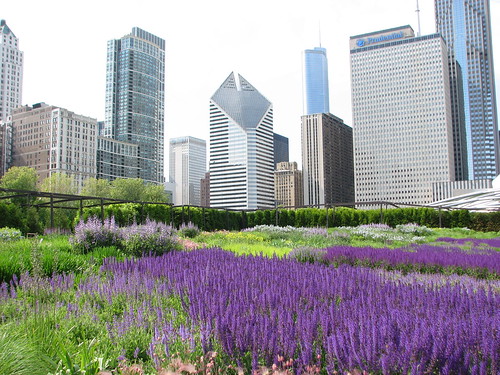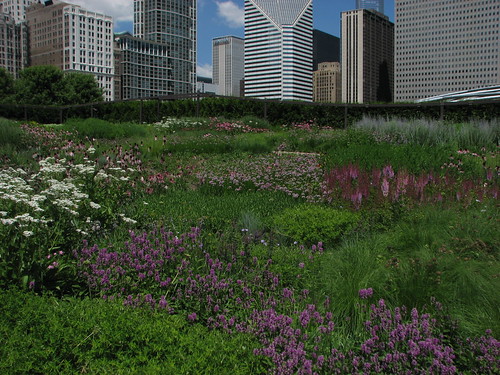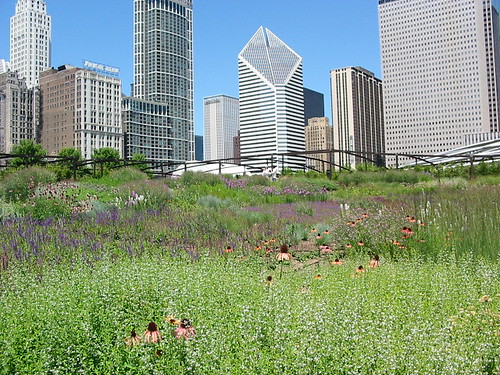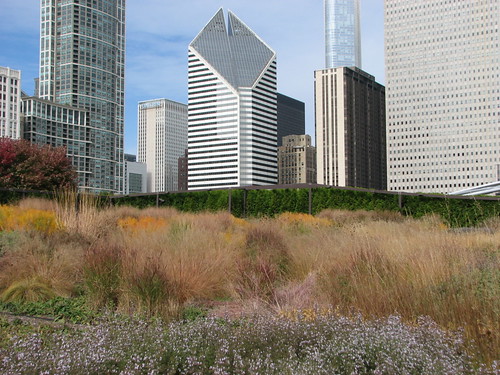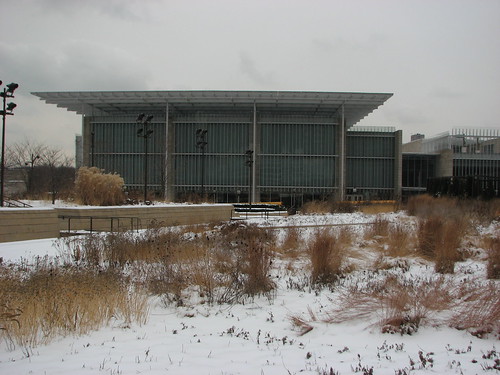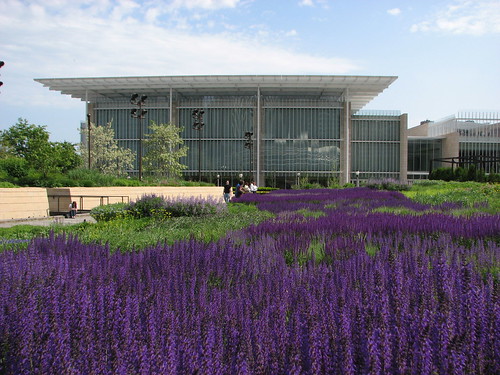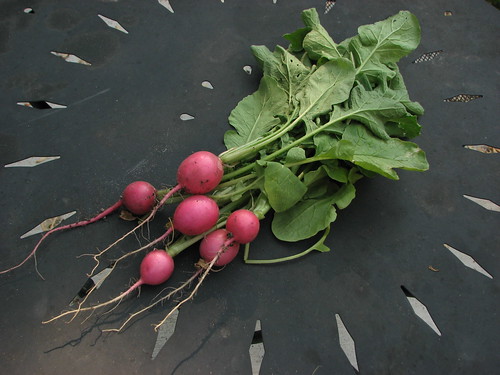Théodore Rousseau, Springtime, c. 1860
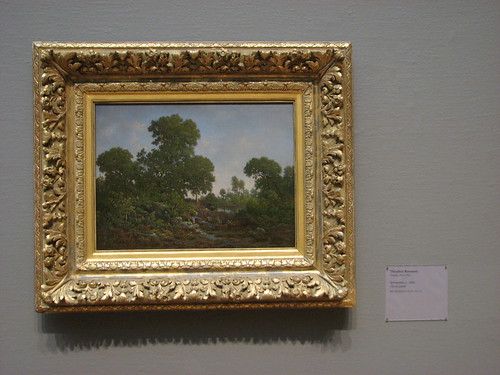
What I found, or rather did not find, surprised me. I hadn't been to the Art Institute in several years and had forgotten what was there. I was expecting endless rooms of landscapes and formal garden paintings. Instead there were very few works that reflected garden settings or really featured plants at all. I don't know if this is typical of a general art museum, with botanical art being pulled from gen-pop and put into exclusively botanical art collections, or perhaps my bias that gardens are an important artistic inspiration is coloring my expectations. In any case, walk with me as we visit...
Gardens in the Art Institute of Chicago
Karl Schmidt-Rottluff, Two Girls in a Garden, 1914. If you squint a bit, you can kind of tell that this is a garden, but it's anyone's guess what plants these might be. I'm going to guess roses. Rhomboidal roses. This non-representational style that suggests garden-ness without getting bogged down in the identity of the plants is pretty common throughout the European art I saw.
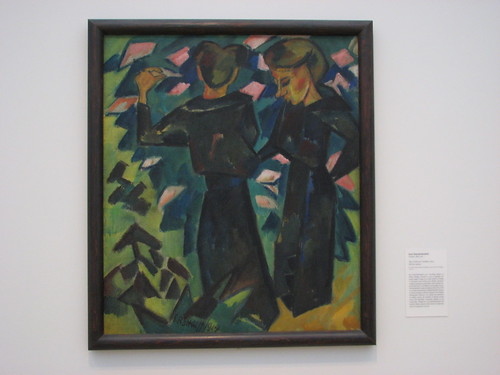
Vincent van Gogh, The Poet's Garden, 1888. This strikes me as more meadow than garden but a lovely spot in any case. While still impressionistic, you feel you can almost identify the various trees and shrubs accurately. Looks like a weeping cherry or mulberry on the right.
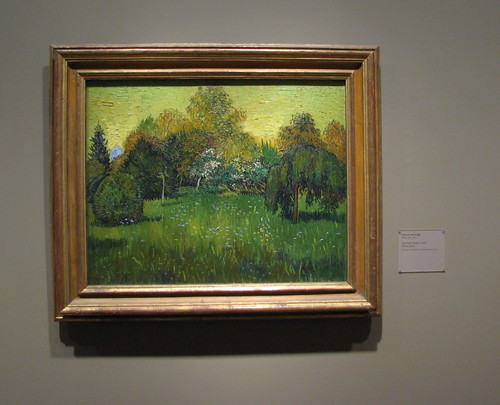
Berthe Morisot, Woman in a Garden, 1882/83. The lady in the picture expects her garden to be a neat, orderly place where she can gossip about the neighbors without having to encounter such unpleasantries as bugs or dirt or hired help. There is, however, a reminder on the left that someone has been laboring off-screen to create this sanctum. That "someone" is not a proper subject for a painting, of course.

Or is he? I like this next painting for showing a glimpse behind the scenes, however unrealistic it might be. I hope this nice young man is not a slave. I prefer to think of him as someone who gardens for a fair wage but finds it sometimes tiring, and as you all know, when you're tired from digging in the soil there's nothing more relaxing than playing a ditty on your French horn.
Albert Schindler, Portrait of a Gardener and Horn Player in the Household of the Emperor Francis I, 1836
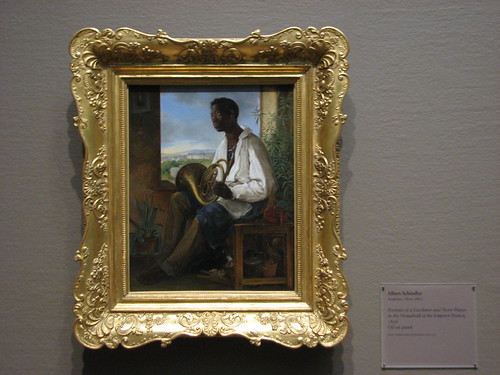
Of course, you can't have a discussion of painted gardens without including Claude Monet. Here is his The Artist's House at Argenteuil (1873)...

...and Water Lily Pond (1899), depicting the pond at his famous garden in Giverny.
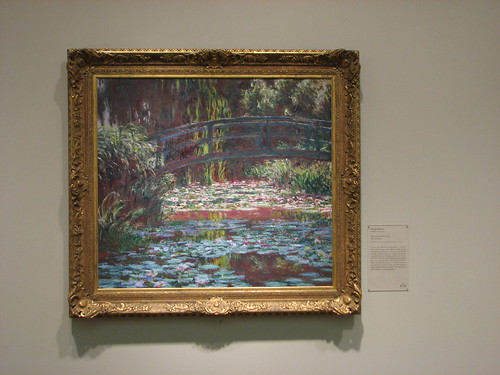
I am an unapologetic fan of Monet and used to have one of his Giverny prints over the desk at my previous job. Monet was obsessive and loved to paint the same scenes over and over, in different seasons and at different times of day. He planted careful gardens just so he could capture them on canvas. Monet would totally be a garden blogger if he were alive today!
Monet's gardens were considered fairly formal, but they had nothing on this one:
Francesco Guardi, The Garden of Palazzo Contarini dal Zaffo, late 1770s

Here's a nice indoor garden that I would love to visit. The photo doesn't do it justice; when you see it in person, the colors and lighting draw you in and you know exactly what the room sounds and feels like, what the air temperature is. This painter cared what the plant species were; you can clearly see several distinct species.
Carl Blechen, The Interior of the Palm House on the Pfaueninsel Near Potsdam, 1834
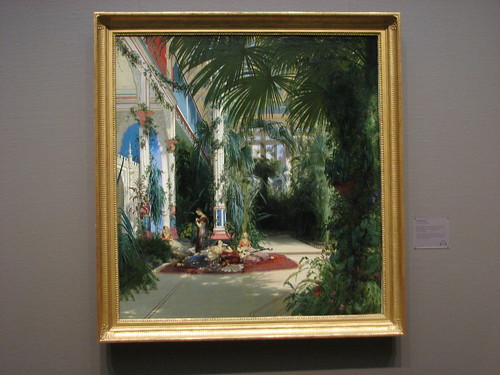
Adriaen van der Spelt and Frans van Mieris, Trompe-l'Oeil Still Life with a Flower Garland and a Curtain, 1658. A still life in a window hardly qualifies as a garden, and the flowers are ridiculous and fluffy and frilly and no self-respecting gardener or florist would put those colors together. I include this painting because of the curtain. It completely blows my mind.
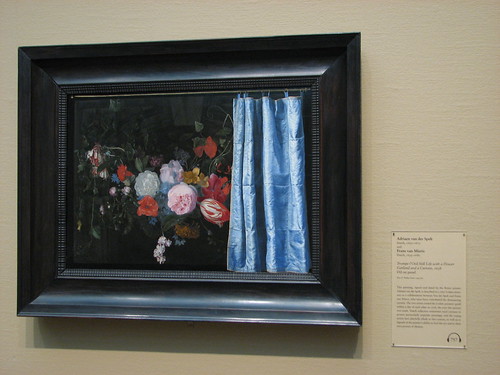
This next is the only American artist I include here, and although it's a landscape rather than a garden, I found myself staring at the painting for a long time. Sheeler's works usually had industrial themes, which makes this landscape especially notable. An artist who found beauty in cities and industry, this blocky geometry of plain grass and hardscape is how he perceived "nature."
Charles Sheeler, The Artist Looks at Nature, 1943.

Across the world and back in time, the Asian depictions of gardens tend to be very formal, featuring specimen plants and repeated motifs rather than garden settings. The plants are stylized but highly representational; no fuzzy green blobs here! This a Japanese Hizen-ware bottle from the 17th century:
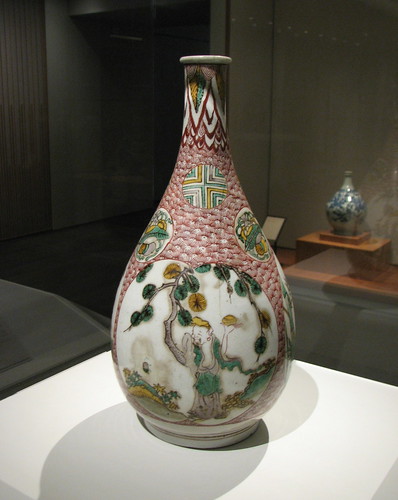
The screen below was likely part of a pair, the "spring/summer" of which has been lost. Again, the plants are stylized but each is an identifiable species. According to the label, time moves right to left; the autumn flowers in the center are bush clover, morning glory, pinks and hibiscus, and the winter flowers including narcissus are on the left.
Suzuki Kiitsu, Flowers of Autumn and Winter, 19th c.
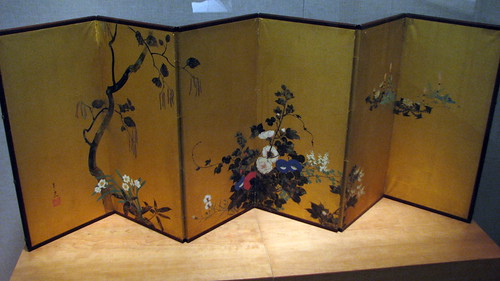
Going farther back in time, here's a depiction of a Chinese "garden." Highly stylized, but it really is meant to show a garden setting (note the fence). To understand what a Chinese garden might have actually looked like, you will have to use your imagination. The flowers shown are peonies. From what I saw, the Chinese LOVE peonies.
Dish with Long-Tailed Birds in a Garden, Yuan dynasty, 14th c.
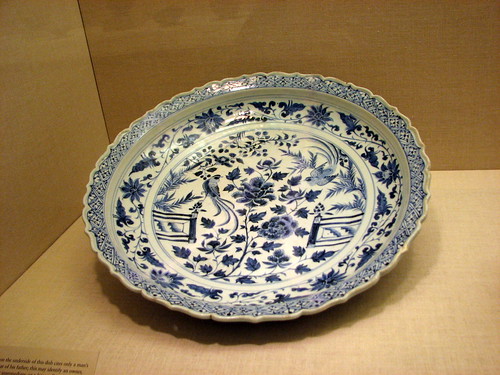
Thus completes our tour of garden-themed artwork at the Art Institute! Maybe it will help tide us over until spring...
